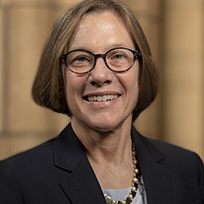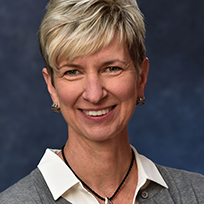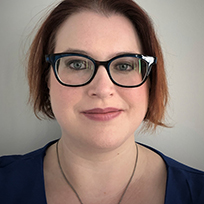
Subscribe to Pittwire Today
Get the most interesting and important stories from the University of Pittsburgh.Whether pondering K-12 or the University of Pittsburgh, the question on everyone’s mind is: What will classrooms look like this fall?
Last month, the University announced Flex@Pitt—an invitation to reinvent usual ways of teaching and learning amid the uncertainties of the COVID-19 pandemic. More details about the model will be released as plans are finalized, but across campus, work is well under way to bring the vision to life.
“These challenging days continue to require our ongoing commitment to working together. By necessity, the University has embarked on many new ways of doing things. That said, what will not change is our first priority: the health and safety of every member of the Pitt family,” said Provost and Senior Vice Chancellor Ann E. Cudd.
At the heart of the Flex @ Pitt model are the concepts of flexibility and adaptation: When pandemic conditions allow for in-person learning, faculty and students will have resources to support them. When remote teaching is necessary, the University will provide faculty with robust tools and support to deliver this education to students. Flex @ Pitt also accommodates community members—faculty and students alike—whose personal health risk or circumstances prevent them from coming to the classroom, even with very rigorous health and safety measures in place.
“Everybody right now has tons of questions,” said Mary Besterfield-Sacre, associate dean for academic affairs in Pitt’s Swanson School of Engineering. Her team is one of the many units throughout the University flexing their creative muscles to answer them.
Any approach will need to consider the differing needs of tens of thousands of students enrolled in Pitt’s 16 schools and four regional campuses, plus the thousands more faculty and staff members. What works for theatre arts students might not work for nursing instructors and both programs could differ between Pitt-Johnstown and Pitt-Greensburg.
So, while the University sets overall standards and provides the necessary structure via the Resilience Framework, a unit-by-unit approach has emerged as the best way to create an on-campus experience for teachers and students this fall.
Besterfield-Sacre’s team has taken best practices from online learning this spring and combined that knowledge with the results of surveys sent to instructors about their needs moving forward. So far, she said engineering courses held this summer have benefited from these efforts.
When the University is operating in the High Risk or Elevated Risk postures, all or almost all instruction will be online, and Flex @ Pitt will mean both technology support and expert guidance are made available to maximize the online learning experience.
Alternately, when campuses are in the Guarded Risk Posture, gatherings of 250 are permitted and in-person classes will be allowed. It is expected that in this posture, students can have at least one in-person class each week for each course they take, with the exception of large lectures without discussion sections. Work continues to fit the fall 2020 course schedule into available rooms that meet specifications to de-densify campus spaces.
“We’re trying to be as communicative as possible with our faculty,” said Besterfield-Sacre, who’s also founding director of the Engineering Education Research Center. Her team sends out weekly emails to faculty with a variety of information and resources, including reminders about important upcoming dates.
In addition to using trainings from the University’s Center for Teaching and Learning, the engineering team has held “mini camps” for instructors and virtual seminars such as “Flex @ Pitt and How to Make It Work for Your Course” and “Inclusive Teaching in the New Environment.”
Jam sessions—groups of faculty members who get together to discuss a particular topic or type of course—have also been recorded and summarized for discussion among their peers, with focuses on wet labs, makerspaces and more.
“The combination of having faculty talking about their experiences, especially those who are teaching this summer, worked really well even though there was a limited amount of faculty,” said April Dukes, Faculty and Future Faculty Program Director for the Engineering Education Resource Center, who has helped develop content for the school. “If we can build on what we did during the summer for the fall semester, I think we’ll be in good shape.”
To make sure their plans and others’ succeed, Pitt is investing in classroom technology and redesign, in accordance with guidance from the Healthcare Advisory Group. Classrooms are being reconfigured to allow for a minimum 6-foot radius of physical distance between all attendees; face coverings will be required for everyone on campus; and faculty who cannot teach in person can choose to be present on screen in the classroom, aided by technical support from Pitt IT to safely initiate the class and monitor it remotely.
Throughout July, the University will continue to announce more details on Flex @ Pitt, as well as other important topics such as housing, Pitt Arrival and extracurriculars. For now, though, Besterfield-Sacre and others are embracing the spirit of Pitt—where progress is always in progress.
Operational postures and the classroom
With expert guidance from members of the Healthcare Advisory Group, Pitt has developed a trio of operational postures that will guide activities on campus during the COVID-19 pandemic.
In-person learning at Pitt will take place when the University is operating in the Guarded Risk Posture, where gatherings of up to 250 people are allowed. Pitt expects that in this posture, students can have regular, in-person class meetings for each course they take, with the exception of large lectures. And regardless: All in-person classes will have a remote option, so that everyone can participate, even if their personal circumstances prevent them from being in the classroom.
In the Elevated Risk Posture, gatherings are capped at 25, so most classes will be taught remotely, with ongoing support from Pitt IT and the Center for Teaching and Learning.
In the High Risk Posture, most instruction would move to the virtual setting, with the exception of select clinicals and labs.
For the most up-to-date information and operating posture, visit coronavirus.pitt.edu.





